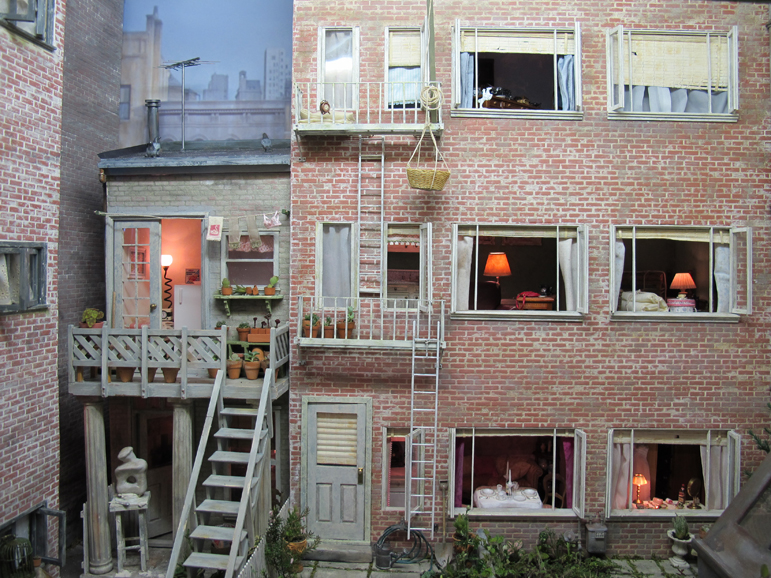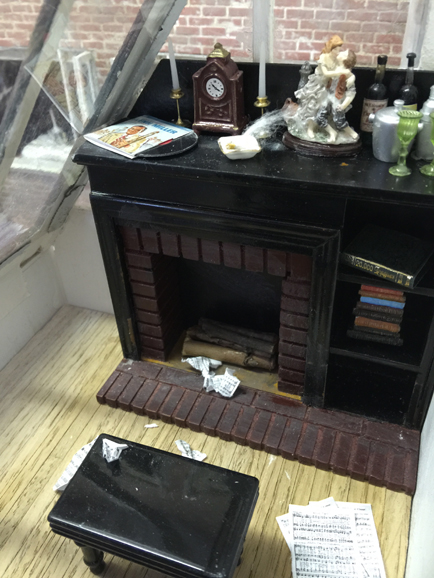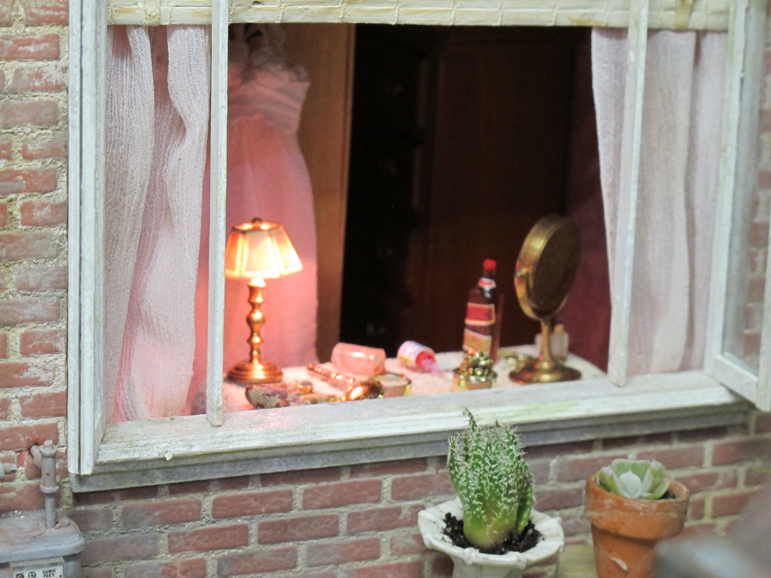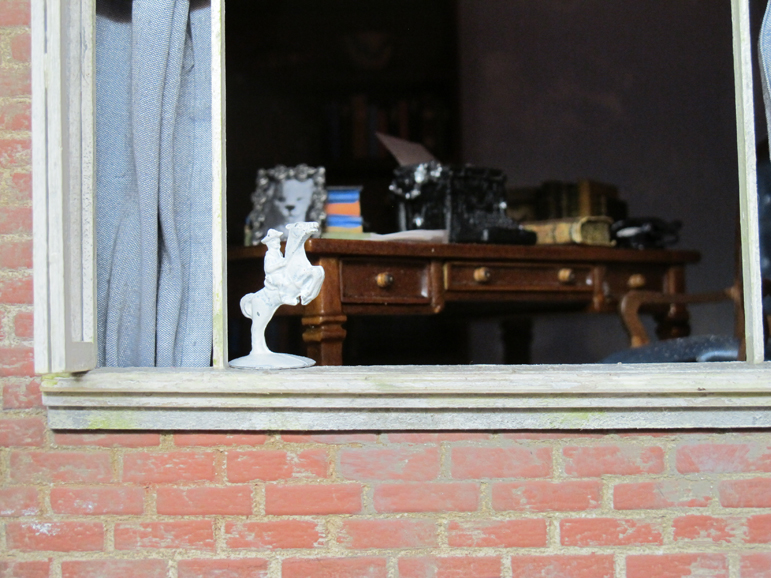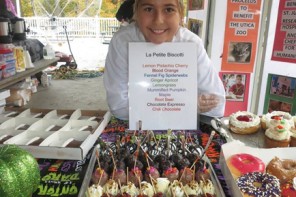For Louise Krasniewicz, it’s a small world, after all.
The Stamford native is not only an artist, but an anthropologist. And, she says, “If you’re an anthropologist, you’re always an anthropologist no matter what you’re doing. You never turn it off. …I’m always looking at how people build worlds.”
Krasniewicz — who teaches anthropology with an emphasis on film and other aspects of popular culture at the University of Pennsylvania’s School of Arts and Sciences — is terrific at building worlds herself, painstakingly recreating movies or scenes inspired by films, TV and popular fiction. It’s just that her worlds may be no bigger than 36 inches wide, 24 inches deep and 35 inches high.
Those are the dimensions of “Rear Window,” her miniature take on the 1954 Alfred Hitchcock classic, on display through December at D. Thomas Fine Miniatures in Hastings-on-Hudson, which was featured in last December’s WAG.
“There are two connections,” she says. “Movies make use of miniatures. But the real connection is that each creates a world. …Hitchcock creates stories with real basic themes: Everyone thinks you’re someone you’re not. Identity is one of the major things for him, proving who you are, dealing with the big questions.”
In his “Rear Window,” he draws us into the decidedly claustrophobic world of a Greenwich Village apartment where globetrotting photographer L.B. Jeffries (James Stewart) recuperates after sustaining a broken leg on assignment. The frustrated Jeffries passes the time watching his artistic neighbors across the courtyard through his and their windows, open to all in a New York heat wave. It’s like a bank of TV screens — television having just begun to have its effect on culture in the early 1950s — with each window offering a continuing narrative. There’s “Miss Torso,” a dancer who cavorts about her place in scanty attire; “Miss Lonelyhearts,” whose place settings for two invariably become dinner for one; a tortured composer who seeks solace in drink; a sculptress who’s hard of hearing; a young couple whose amorous goings-on are silhouetted against their blinds; a childless middle-age couple who dote on the little pet dog they lower to the courtyard in a basket to do his business.
More ominously, there’s the traveling salesman Lars Thorwald (Raymond Burr, far from his “Perry Mason” days) and the invalid wife who suddenly disappears. Has she gone to the hospital — or has Thorwald murdered her, as Jeffries suspects? It’s a hunch that will put Jeffries, his nurse Stella (Thelma Ritter) and especially his fiancée, Lisa Freemont (Grace Kelly), in grave danger.
As with Hitchcock, Krasniewicz gives us this world from Jeffries’ perspective. We are Jimmy Stewart. However, her insight is to render it not through the characters but through the remains of their days — the table set for two, the second-rate sculptures, the carnal silhouette, the music scattered beneath the piano bench, and, perhaps most tellingly, the abandoned handbag and wedding ring in the threadbare Thorwald apartment. It’s the small things that stop Jeffries, Lisa — and us — cold. “Yes, that’s right,” says Krasniewicz, whose extensive research included some 30 viewings of the movie, “the small things.”
Working with a wooden box, Gatorfoam board, pink insulation board, brick plastic sheets, mortar and paint over the course of a year, Krasniewicz created virtually everything by hand. An exception — a sculpture of a horse and rider that she found in an old Monopoly game set and painted white. Such is her detailed craftsmanship that when you see photographs of the work, you think you’re looking at a still from the actual movie set. It’s no wonder it took first place and best in show at this year’s Philadelphia Flower Show.
This was not her first time at the rodeo, so to speak. She was a last-minute entrant to the 2011 Paris-themed show, nonetheless turning out a charming steampunk-style (think 21st century meets the Industrial Revolution) miniature of French science-fiction writer Jules Verne’s office and garden. For the 2012 Hawaiian show, she created a murder-in-a-museum to be solved by Honolulu detective Charlie Chan. (Krasniewicz participates in a Charlie Chan chat room.) She took first prize and best in show for her 2013 version of The Herbology Greenhouse at Hogwarts. Last year she drew movie buffs into another Hitchcock film, “The Birds,” a favorite. (Other favorite movies include “The Thing From Another World” and “The Wolf Man.”)
The flower show got her back into miniatures, a love she discovered in the 1970s during a visit to Disneyland — “It has lots of miniatures and is itself a miniature of the world” — and Knott’s Berry Farm. (“I still have the miniatures I bought there,” she says.) But she has been an artist since her days at the now-defunct Sacred Heart Academy in Stamford. Back then, it was photography. That proved too limiting so she turned to multimedia in college. (She holds a B.A. in anthropology and an M.A. in educational media from the University of Connecticut and a Ph.D. in anthropology from the University at Albany, SUNY.)
“Rear Window” was her farewell to the Philadelphia Flower Show, but not to the world of miniatures. Already, she’s percolating with ideas for the antiques shop from “The Wolf Man,” a particular challenge as it is a black-and-white film, and, perhaps, for Hitchcock’s “Psycho.”
Will it be a room in the Bates Motel or the kitchen of the Bates’ Gothic house or both?
“Part of being a miniaturist is seeing the world differently,” Krasniewicz says. “The passion of miniatures is about reclaiming your imagination.”
For more, visit thewonderofminiatures.com and dthomasfineminiatures.com.


